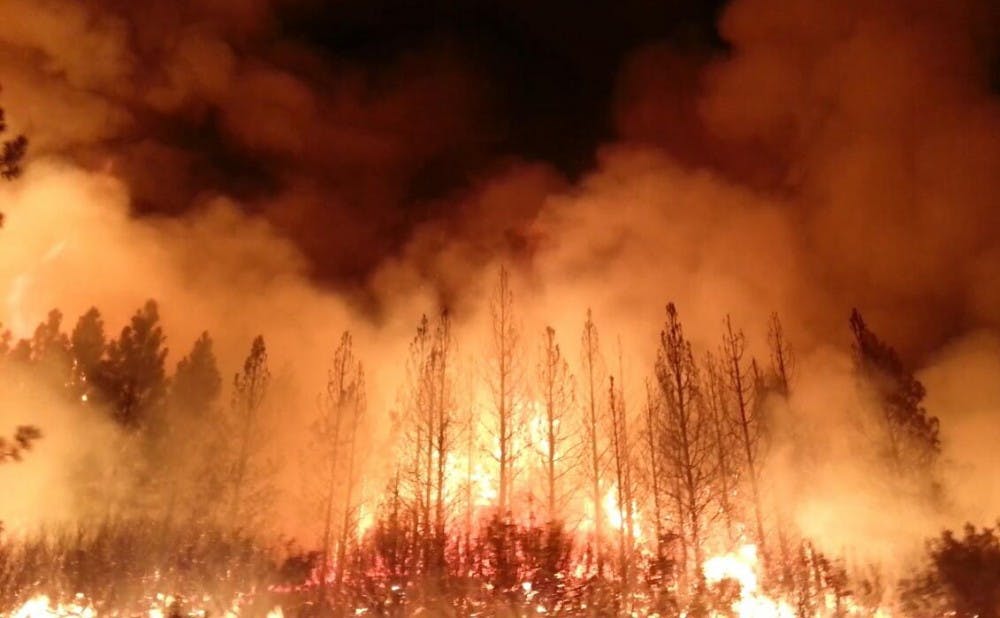Another series of wildfires has gripped the state of California. The current inferno to make national news is the rapidly-spreading Camp Fire. With a current death toll of 56 people, it is the deadliest wildfire in California history.
According to the California Department of Forestry and Fire Protection, there have been 5,798 wildfires recorded in the state since January of this year, burning more than 800,000 acres of land. The United States Department of Interior claims that around ninety percent of these fires were caused by human activity.
But why exactly does the West Coast witness such frequent blazes compared to other regions?
According to Yanlan Liu, a Ph.D student in the Nicholas School of the Environment, explained the conditions that lead to fires like the ones that have attacked California.
“For a fire to initiate and propagate across a large region it has to have several conditions," Liu said. "One is low water content in the forest, low air moisture and also enough open area. For Duke Forest there are two things: one is that it is pretty wet during most of the year and the canopy is closed so it does not have much open area for fire to burn."
Unlike Duke with its dense forest, California is home to an arid climate and massive open grasslands that are subject to high winds—the perfect environment for wildfires.
For the many Duke students who hail from the Golden State, news about the current series of wildfires may seem familiar. These frequent wildfires have become an anticipated aspect of everyday life in California.
First-year Joel Kim is one of many Californian Duke students who has witnessed the progression of a California wildfire.
“The house down the street from me burned all the way to the ground while I was evacuating... the fire got very close and I was afraid that my house would also burn down,” he said. “Luckily, the firefighters stopped it before it could.”
Fighting the current series of wildfires, such as Camp Fire in Butte County and the Woolsey Fire in Los Angeles and Ventura Counties, is proving to be a substantial challenge for firefighters due to windy conditions and rapid spread through dry vegetation. Authorities in California have announced the current containment of Camp Fire to be at forty percent, with the death toll still rising.
Grayson Real, a first-year from Orange County, Calif., recounted that she was forced to evacuate due to a canyon fire last October.
“I recognized a house near mine was burning down and I began to panic," Real said. "I called my parents who weren’t home at the time to tell them the smoke was growing ominous and black. The air was thin and my eyes began to burn... All the pictures, clothes, moments that my mom had kept for years were going to be obliterated."
Get The Chronicle straight to your inbox
Sign up for our weekly newsletter. Cancel at any time.

